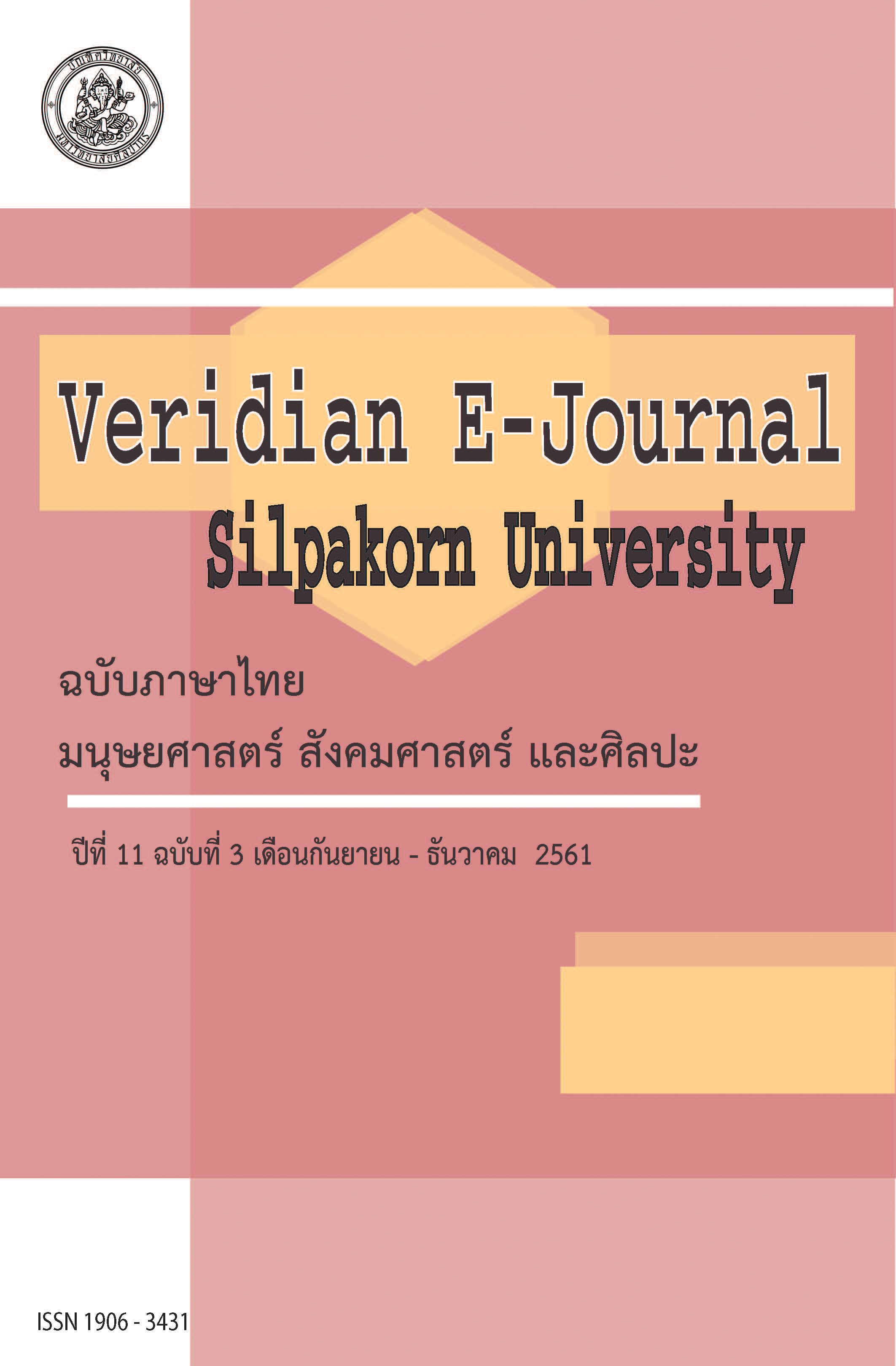บทบาทหน้าที่ของมรดกภูมิปัญญาทางวัฒนธรรมในการสร้างอัตลักษณ์ชุมชน ตำบลหนองกะท้าว อำเภอนครไทย จังหวัดพิษณุโลก (The role of Intangible cultural heritage in the production of the community identity: the case study of Nangkatao sub-district, Nakornthai district, Phitsanulok province)
Main Article Content
Abstract
งานวิจัยนี้มีวัตถุประสงค์เพื่อศึกษาบทบาทหน้าที่ของมรดกภูมิปัญญาทางวัฒนธรรมในการสร้าง อัตลักษณ์ชุมชนของตำบลหนองกะท้าว อำเภอนครไทย จังหวัดพิษณุโลก ดำเนินการวิจัยตามระเบียบวิธีวิจัย เชิงคุณภาพ สืบค้นข้อมูลมรดกวัฒนธรรมโดยใช้กระบวนการงานวิจัยเพื่อท้องถิ่น (CBR : Community Based Research) ที่เน้นการมีส่วนร่วมของทุกภาคส่วนที่เกี่ยวข้อง และอธิบายผลการวิจัยในรูปแบบพรรณนาวิเคราะห์ ผลการวิจัยพบว่ามรดกภูมิปัญญาทางวัฒนธรรม ตำบลหนองกะท้าว ปรากฏจำนวน 6 ด้าน ได้แก่ 1) วรรณกรรมพื้นบ้าน 2) ศิลปะการแสดง 3) แนวปฏิบัติทางสังคม พิธีกรรม ประเพณีและเทศกาล 4) ความรู้และการปฏิบัติเกี่ยวกับธรรมชาติและจักรวาล 5) งานช่างฝีมือดั้งเดิม และ 6) กีฬาภูมิปัญญา เมื่อนำมาวิเคราะห์คุณค่าอัตลักษณ์มรดกวัฒนธรรม พบว่า มรดกภูมิปัญญาทางวัฒนธรรมของชาวตำบลหนองกะท้าว มีบทบาทหน้าที่ในการอธิบายกำเนิดอัตลักษณ์ของกลุ่มชนและพิธีกรรม มีบทบาทหน้าที่ในการให้การศึกษา อบรมระเบียบสังคม รักษามาตรฐานพฤติกรรมของสังคม และมีบทบาทหน้าที่ในการเป็นทางออกให้กับความคับข้องใจของบุคคลอันเกิดจากกฎเกณฑ์ทางสังคม ซึ่งมรดกวัฒนธรรมเหล่านี้ช่วยสร้างอัตลักษณ์ของคนในชุมชนที่มีความหลากหลายทางวัฒนธรรมและชาติพันธุ์ ให้มีความเข้มแข็ง มีปฏิสัมพันธ์ และสามารถอยู่ร่วมกันอย่างสงบสุขบนพื้นฐานของวัฒนธรรมดั้งเดิมของแต่ละกลุ่มชน
The objective of this research was to examine the role of Intangible cultural heritage in the production of the community identity in Nongkatao sub-district, Nakornthai district, Phitsanulok province. The study presented the qualitative research method by using Community Based Research (CBR). This method referred to the process that brought a variety of participants who were the researchers and community members that worked the sub-district administrative organization and the villagers who lived in Nongkatao sub-district. These community members and villagers helped to investigate the data of cultural heritage in order to get the accurate results. The findings of this research found that there were six aspects of community culture in Nongkatao sub-district: 1) Folk literature (traditional literature) 2) Performing arts 3) Social practices, a rite or traditional and festival ceremonies 4) Knowledge and practices concerning nature and universe 5) Traditional craftsman 6) Folk sports and traditional games. The value and identity of Intangible cultural heritage revealed that Nongkatao sub-district had the roles of explanation in the original community identity as well as traditional and festival ceremonies. Moreover, this value also presented the roles of education and practices in the common law tradition in order to maintain behavioral standards of society. In addition, this value showed that the roles of Intangible cultural heritage coped with frustration of individuals that several problems came from social norms. Therefore, all aspects of Intangible cultural heritage supported the identity of community members who had cultural and ethnic diversity in order to gain strength, desirable interaction as well as living together happily and peacefully in the society based on traditional culture which expressed each part of the group members.
